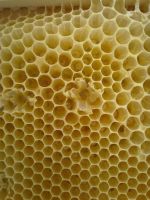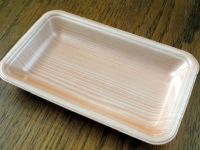- Industries & Machines Industries & Machines
- IIoT IIoT
- Service-Toll Processing Service-Toll Processing
- Material Material
- News News
- IR Information IR Information
-
Sustainability
Sustainability
Sustainability
- Introduction
- Hosokawa Micron Group "Basic Human Rights Policy"
- Hosokawa Micron Group "Basic Policy on the Environment"
- Sustaibality Policy - Mission Statement
- Editorial Policy
- Integrated Report
- Materiality & Strategy
- Technological contribution to a sustainable global environment
- Contributions towards a safer, more secure and prosperous society
- Sophistication of governance that supports business
- ESG Data Collection
- Sustainable Business Management ~ Finance
- Infromation Disclosure Based on TCFD Recommendations
- Jobs and Careers Jobs and Careers
-
About Us
About Us
About Us
- Greetings (Company Introduction)
- Hosokawa Micron Group "Basic Human Rights Policy"
- Hosokawa Micron Group "Basic Policy on the Environment"
- Management Philosophy
- Corporate Overview
- Executive Officers
- Corporate Profile
- Business Areas and Strengths
- Corporate History
- Hosokawa Micron Group
- Domestic Facilities
- Overseas Subsidiaries (Asia)
- Overseas Subsidiaries (Europe)
- Overseas Subsidiaries (America)
- Asian Agents
- Powder Technology Research Institute
- Annual Publication "Micromeritics"
- Industrial Property Rights
- Journals and Books
- Technical Information
- Compliance Charter
- Privacy Policy
- Cookie Policy
- Quality Principle

Industries & Machines
- TOP
- About Us
- Technical Information
- Details of Millling technology
- Resins and Plastics and Polymers and Polymers
- Greetings (Company Introduction)
- Hosokawa Micron Group "Basic Human Rights Policy"
- Hosokawa Micron Group "Basic Policy on the Environment"
- Management Philosophy
- Corporate Overview
- Executive Officers
- Corporate Profile
- Business Areas and Strengths
- Corporate History
- Hosokawa Micron Group
- Domestic Facilities
- Overseas Subsidiaries (Asia)
- Overseas Subsidiaries (Europe)
- Overseas Subsidiaries (America)
- Asian Agents
- Powder Technology Research Institute
- Annual Publication "Micromeritics"
- Industrial Property Rights
- Journals and Books
-
Technical Information
- Summury of Powder Technology
- Details of Millling technology
- Details of Classification Technology
- Details of Mixing/Blending Technology
- Details of Particle design Technology
- Details of Agglomeration Technology
- Details of Drying Technology
- Details of Dedusting Technology
- Details of Measuring Technology
- Compliance Charter
- Privacy Policy
- Cookie Policy
- Quality Principle
Resins and Plastics and Polymers and Polymers
Resins and Plastics and Polymers and Polymers
There is something called organic matter in the world. They are made up of carbon, hydrogen, oxygen (and nitrogen and sulphur). There is a huge variety of organic matter, but the simplest structure is methane (CH4), which has four hydrogens bonded to one carbon. You may have heard of methane gas, or methane hydrate (nicknamed "burning ice"), which is found in the seas around Japan.
Organic matter is all around us. The bodies of living organisms, including our own, are made up of many different types of organic matter. For example, proteins (skin, muscles, nails and hair), hormones and enzymes are all organic. (Bones, for example, also contain inorganic substances.)
The sap that seeps out of certain trees, such as pine trees and gum trees, when they are damaged, is slightly different from the sap of other plants. This sap is not a simple liquid, but a wax. The sap is not a simple liquid, but is made up of two types of wax (wax, which is also used to make Japanese candles) and fat (oil, which is liquid at room temperature, and fat, which is solid at room temperature).
These are called "machine" fats (because they become solid at low temperatures), or "resin". However, although they are called "resins", it is known that similar properties can also be obtained from animals, so the term "resin" does not necessarily refer to vegetable matter. For example, beeswax is produced by bees.

As time went on, various organic materials were synthesised from oil, which had properties similar to those of natural resins (especially wax). These are called synthetic resins. Some of the best known synthetic resins are as follows
- Polyethylene (PE), the material used to make bags to hold goods in convenience stores
- PET (short for polyethylene terephthalate), which is used for drinks containers as PET bottles
- Polystyrene (PS), used for meat and fish trays. Polystyrene foam, or foamed polystyrene for short, is made by adding lots of air bubbles to increase its thermal insulation properties.)
- Polyamide PA, also known as nylon, which is a synthetic fibre.
- Polyvinyl chloride (also polyethylene), which is used as a wrapping material to put food in the fridge or freezer PVC

(The name of the substance is in the form of a poly "something". This is the point.)
In addition, the most frequently heard names in our applications are PET and PA, and in pulverization, PVC. You can find out more about the former on our Solid Phase Polymerisation and Drying page and about the latter on our E-PVC page.
Oils and fats are generally classified as low-molecular-weight substances, with a mass of several hundred grams per mole (mol) of the molecules that make them up. This mass per mol is called the molecular weight.
The molecules you learn about in chemistry class in your first or second year of high school have a molecular weight of only a few dozen, so even if you hear the word "several hundred", you may not get the impression that they are "low".
However, the molecular weight of the substance called poly "something", which I mentioned earlier, is more than 10,000 at the very least, and in some cases more than a million. In comparison with this, the molecular weight is certainly low.
The word "poly" in "poly something" has the meaning of "plural", but especially in chemistry it means "polymerised substance".
Polymerisation means that the parts of the "something" are joined together and connected, and that they are connected in multiples. It is similar to the state that the ring of the chain connects to the ring of another chain, and finally it becomes a long chain. For this reason, a polymerised molecule is also called a molecular chain.

The number of rings in this chain is not a few, but hundreds or thousands. This is why the word poly, meaning many, is added to the beginning of the word poly. Ethylene (C2H6 in the chemical formula, but it is difficult to understand what the structure is, so it is written as CH3-CH3 in the composition formula. When many ethylenes are connected, we get CH3-CH2-CH2-........ -CH2-CH2-CH3. However... As mentioned earlier, there are several hundred of these, so we can't write them down. So we cut out only the connected part, which is the common part of the repetition, and write it as follows
-(-CH2-)n-. This n is called degree of polymerization. In solid phase polymerization, the purpose is to increase this n. That is to say, when n changes, physical properties also change.
Substances in which the same structure (corresponding to the loop of a chain) is repeatedly linked together are collectively called polymers.
One repeated structure is called a monomer using the word mono, which means singular or single. When two monomers are linked together, they are called dimers, using the word di to mean two (or di in other cases). When two monomers are connected, they are called dimers using the word di, meaning two, and when three monomers are connected, they are called trimers using the word tri, meaning three. These words are derived from the Greek word for number.
Polymers are also called macromolecules because their molecular weight is very large.
There are other substances with higher molecular weights, but they are not as large as polymers and there are fewer of them.
Last but not least, what is the most commonly heard word, plastic?
The word "plastic" originally comes from the term "plasticity". (The final "ity" is an abstract noun ending that indicates a "property", so when we use it to name something, the ending disappears. Therefore, the word plastic becomes plastic.)
Plasticity is the property of a material that undergoes permanent deformation when a force is applied to it (the opposite of this is elasticity. This is the opposite of elasticity, which is the property of a spring or a low-resilience pillow. (The opposite of this is elasticity, which is the property of a spring or a low resilience pillow, which of course becomes plastic or breaks down when a certain amount of force is applied. Polymers generally deform when subjected to heat or pressure. They are called plastics because they are plastic, i.e. they do not return to their original shape after the cause of the deformation has been removed.
Polymers can be divided into two types: thermoplastics, which are softened by heat (they melt and change shape when heated), and thermosets, which are hardened by heat and then do not show plasticity when heated. Of course, if you heat them too much they will burn, so that's the first step.
The picture on the left shows an example of a thermoplastic resin (food tray) and the picture on the right shows an example of a thermoset resin (substrate).

.jpg)
Based on the above, we can classify the words as follows
- Polymer (substance) is a general term for any substance containing a polymer. Although they are not strictly the same thing, they are often used in the same sense.
- Polymers and synthetic resins are used in much the same way, but since natural resins are also polymers, the word resin has a broader meaning.
- Plastic generally refers to polymers, but has a broader meaning than polymer.
In everyday life, we don't need to worry about these differences at all, but they do have slightly different meanings and are used differently in the industries that deal with these materials. For example, in the field of pine resin, pine resin is not called a polymer, but a resin.
